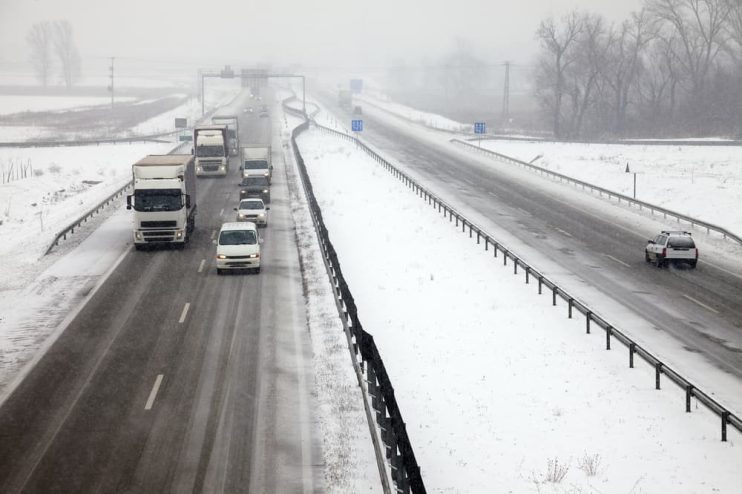
The harsh winter weather puts extra demands on your motoring. Last year we took a look at the precautions you can take before setting out on the road and the differences between summer and winter tyres.
However, there are many good practices you can adopt when driving in various wintry conditions.
These ensure that you will arrive safely at your destination whilst exposing yourself and other road user to the minimum amount of risk. Different conditions require different measures and in this guide we look at the best way to tackle the various types of bad winter weather.
Table of contents:
- Driving in Snow
- Ice and Hail
- Fog and Low Visibility
- High Winds
- Heavy Rain and Flooding
- An Important Question
Driving in Snow
Driving in snow can be notoriously difficult. This is without question the most dangerous type of winter weather as the snow can often mask other dangers, such as ice or even buried obstacles in especially deep conditions. It is therefore imperative that you approach snow with extreme caution.
Drive Gently – Make sure you give yourself time to negotiate ice that may be hidden from view under the snow. Use low revs and a high gear and accelerate slowly, as this will allow you to react quickly to any situation. There are many hidden dangers that can lurk underneath the snow such as black ice, the effects of which will be amplified if you drive into them at speed.
Steer into a Skid – If you find that your car is skidding, slowly steer into the skid taking care not to tap on the brakes or let go of the steering wheel as either action could see you lose control of your vehicle. It is also important to keep a clear head, staying focused on driving and not panicking.
Find your own Way – If the roads have not been gritted then take care to avoid the wheel-tracks of other vehicles. These often contain compacted snow that has turned into ice. Where possible try to drive on the clean unused snow to ensure you get the necessary grip on the road.
Avoid the Glare – Believe it or not, snow can reflect the low winter sunlight dazzling drivers in the early morning and afternoon. Avoid blind spots and glare with a pair of sunglasses, ensuring that you have good visibility of the road at all times.
Keep Calm – It can be very frustrating when driving alongside other road users who are acting in an overly cautious manner. Remember that even if you are accustomed to driving in the snow others often find this a daunting or even a frightening task. Give them the space and time they need to make the right decisions without putting pressure on their driving.
Be Late – Even if you have a vital appointment it is always better to be safe than sorry. Everyone understands the difficulties created by snow drifts on the roads and will not berate you for driving carefully. Remember you can always pull over and make a phone call notifying the relevant people of your situation.
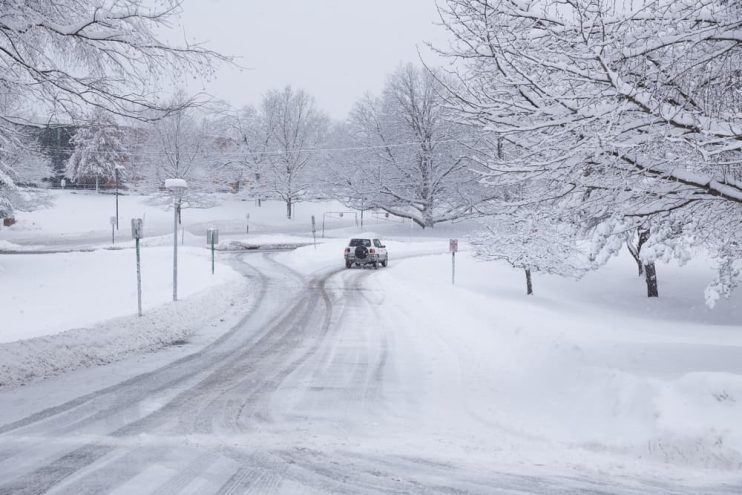
Ice and Hail
In winter, water on the road’s surface can quickly turn to ice. Sleet, hail and blizzard conditions can also lead to very slippery conditions, especially when a sudden change in the weather means that the local authorities have not had time to mobilise gritting trucks and lorries.
Check your Windscreen – Make sure that your windscreen is completely clear before you embark on your journey in sleet or hail. This will help your wipers and screen-wash clear any icy build-up that occurs on the glass during your journey. As sleet and hail can also diminish your visibility it is very important to give yourself the best chance of seeing any dangers on the road.
Add Braking Distance – Roads can become treacherous and slippery as ice and hail land on their surface. This can considerably change your car’s braking distance, so be sure to allow as much as ten times the normal gap between you and the vehicle in front to deal with the possibility of sudden stops or crashes.
Easy Does It – Be sure to operate your brakes, steering and acceleration as slowly and smoothly as possible. Sudden movements and changes in your car’s inertia could cause you to lose control on particularly icy spots. You may find that a higher gear is better when it comes to driving or moving off on packed ice.
Seek Shelter – If you find yourself in a particularly severe hailstorm then you may wish to pull your car over for the duration. Where possible try to seek shelter underneath an underpass or in the shade of large buildings or trees. This will stop your car from being damaged by large hailstones. Can’t find cover? Try to position your car so that the front windscreen is facing the hail as its glass is more resistant to impact than the glass in your side doors, and will therefore be less prone to breaking.
Fog and Low Visibility
In winter fog can arrive in a matter of minutes. This can kill your visibility and make driving conditions extremely unsafe and dangerous. As most other road users will be in the same situation as you, expect traffic to move at a very slow pace.
Fog Lights – Before you set out on any journey in fog or low visibility, make sure that you understand the operation of your fog lights. Remember that fog lights are not the same as full beams, and that you may need to dip your fog lights when coming over hills.
Don’t Follow the Leader – Although it can be very tempting, do not use the tail lights of the car in front as a guide to the road. This could lead you into dangerous conditions, you could even follow them into a ditch, or worse still a crash if you are not careful. It could also lead to tail-gating, frustrating the driver of the car in front.
Keep Extra Distance – Make sure that you always give the vehicle ahead of you extra room to allow for braking. If this vehicle suddenly stops then you may not see this quickly enough to slow your car effectively. Give other drivers extra room to allow for any emergency situations.
Use All Senses – If you must travel in extreme low-visibility situations then it is a good idea to wind down your window. This will allow you to listen out for traffic noises, crashes and other significant sounds, which could help alert you to unseen dangers on the road.
Pull Over – If fog becomes extremely bad to the point where you can hardly see the road in front of you, then it is always advisable to pull over and park your car until the poor visibility passes. This ensures that you do not expose yourself or other drivers on the road to danger if you are not confident of driving in these conditions.
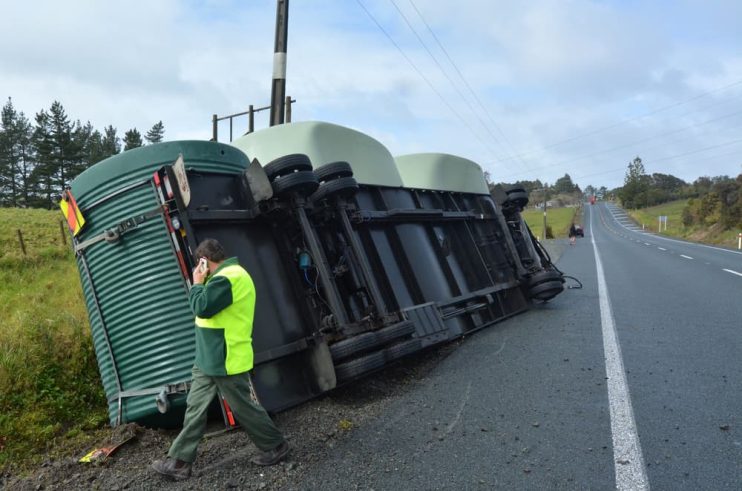
High Winds
When driving in high wintry winds it is especially important to be aware of other vehicles on the road. As wind comes in gusts rather than a steady stream of air, this can cause vehicles on the road to move suddenly.
Take Care of Caravans – Due to their light construction, caravans can easily be moved on the road by high winds. Whenever travelling behind any vehicle pulling a caravan, take extra care to keep your distance and only overtake if you can give it an extremely wide berth.
Long and Large Vehicles – Like caravans, large, high-sided vans and lorries can be moved at a moment’s notice by strong and powerful gusts of wind. Always give these vehicles the space they need on the road, staying an appropriate distance behind to deal with any sudden movement.
Keep a Firm Grip – Make sure that your hands are on the steering wheel at all times during high winds. This will allow you to quickly respond to any sudden movement of other vehicles on the road.
Drive as Slowly as Possible – Drive slowly to minimise the impact of wind. Strong winds can actually get underneath your car and affect its handling and extending your braking distance. Remember that the higher your speed, the more your car will be moved by powerful gusts.
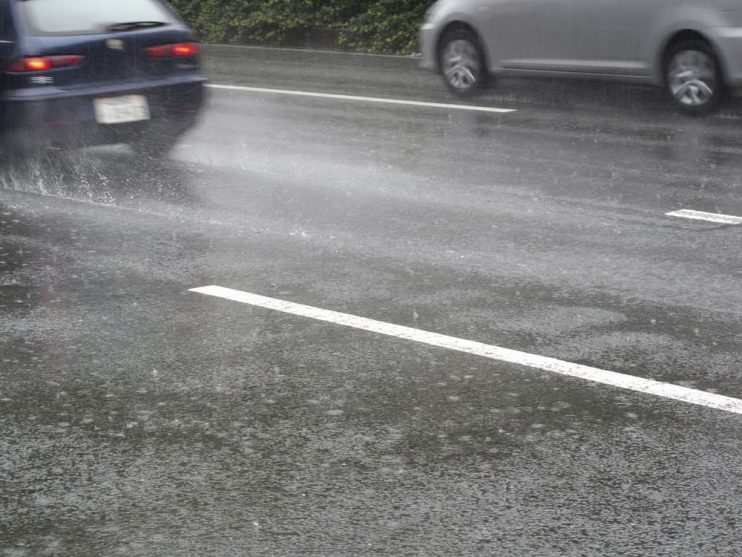
Heavy Rain and Flooding
It is not only snow and ice that cause danger on the UK’s winter roads, as sudden downpours and protracted bouts of rain can lead to excess water on the road surface. This can lead to changes in the way your car and other vehicles on the road behave, which means you will need to be extra vigilant whilst behind the wheel.
Surface Spray – When driving in heavy rain, be sure to look out for large or fast moving vehicles that can create large amounts of spray, reducing your visibility if you sit behind them or try to overtake. Give such vehicles the space they need on the road.
Allow Extra Braking Distance – Like ice, water creates a slippery road surface that can double or even treble your braking distance. Be aware of this fact and give other vehicles on the road extra distance to allow for sudden stops or emergencies. It will always help to drive at slower speeds.
Slow Down on the Streets – When driving in urban areas make sure that you slow down when passing through large puddles and pools of water, so you do not splash or soak any pedestrians or cyclists in the vicinity.
Watch Out for Aquaplaning – When there is excess water on the road’s surface this can cause aquaplaning. This is where the grooves in your tyres cannot channel the water away quickly enough for your vehicle to keep a good contact with the road surface, which in effect means you will be floating on a thin pool of water. If your steering starts to feel light whilst driving in severe rain ease off the accelerator until you gain full steering control.
Protect your Engine – If you are unlucky enough to break down in torrential rain, make sure you keep the bonnet of your car closed until the rain is less severe, as opening it could allow water into the engine, which could damage the electrics.
An Important Question
As a final note, if you are thinking of driving in adverse conditions, always make sure you ask yourself if your journey is completely necessary. If you can make other arrangements, phone instead or simply walk to your destination then always take the alternative rather than exposing yourself and other drivers to the dangers created by the harsh winter weather.

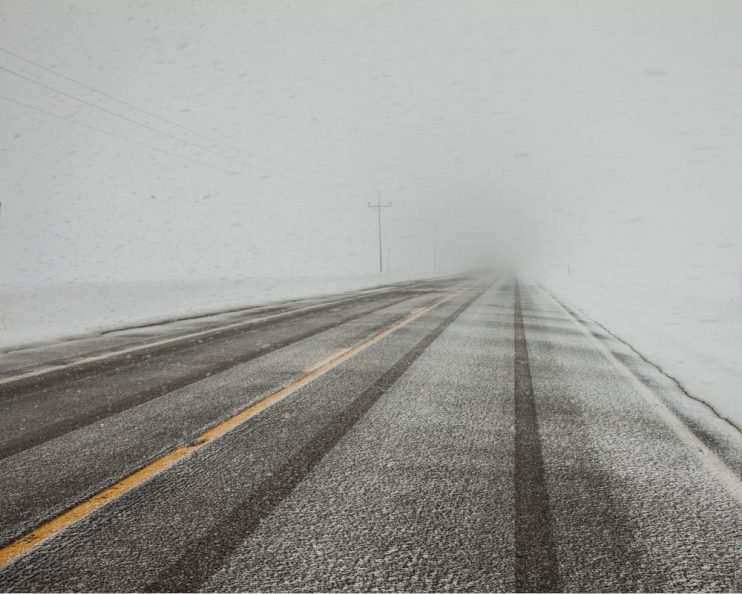
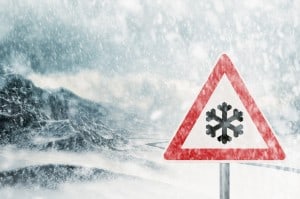
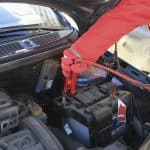
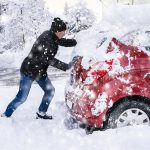
.png)
Pingback: 11 Top Tips for Keeping your Car Clean in the Winter - BreakerLink Blog